The Bayon lives!
Many locals still worship in Angkor Thom’s Bayon. Hang out there for a while and you can meet a lot of great people. But you can also linger over its sculpture and get close-up views of the lives of the ancient Khmers which you won’t be able to find anywhere else.
Who were the ancient Khmers? The Bayon gives us lots of glimpses.
Many of the scenes are domestic and intimate, like this one of people eating under a pavilion or in an upper-class home.
Above, someone is either getting a delousing or a head massage.
Other scenes on the Bayon also have medicinal themes, like this one of a woman in labor. Khmers put a lot of drama into their sculpture–at Banteay Srei, and Angkor Wat, and many other temples. This Bayon scene shows the mother as contorted as warriors in battle. Two reposed women frame her and give her comfort.
The above scene takes us into the business world. Women weigh goods, and two Chinese men make comments.
The guys in the above shot want more visceral entertainment. Khmers staged elephant and boar fights in front of Angkor’s royal palace. Yesterday’s post has a scene of a cock fight from the Bayon. So, many Khmers must have enjoyed animal fights.
Educated people today find them disgusting, but they have been popular all over Southeast Asia for many centuries. Khmer society was very hierarchical, with sharp distinctions between nobles on one side and farmers and slaves on the other. Most Southeast Asian societies are hierarchical, and they allow little room for expressing anger. These animal fights gave people a way to let off steam, and take a break from the hard and collective work of rice farming.
The men above are doing something more peaceful–worshiping.
These folks are preparing a feast. The Bayon has many scenes that are festive.
The people above are probably making rice cakes.
Sometimes Khmers enjoyed a circus with their feasting. Graceful acrobats, and–
brawny wrestlers provided a full range of entertainments.
So who were the Khmers? They liked to live fully. Like Cambodia’s land and Angkor’s great temples, they were exuberant. Khmers loved all the good things in life, and represented themselves with action scenes.
But the Bayon was the main royal cult temple for the Khmer Empre’s most prolific builder, King Jayavarman VII. The builder of Angkor Wat didn’t portray many commoners on his cult temple. Why this change? The next post on the Bayon will show the larger political context that these ordinary people lived in.

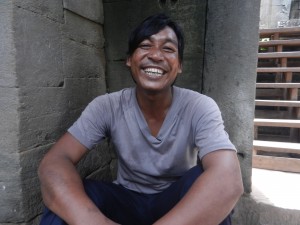
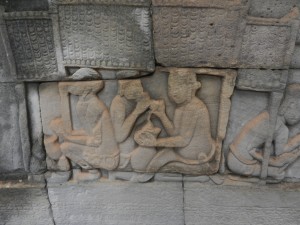
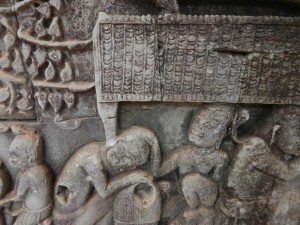
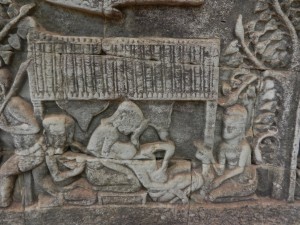
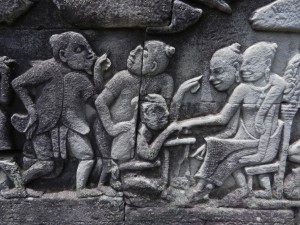
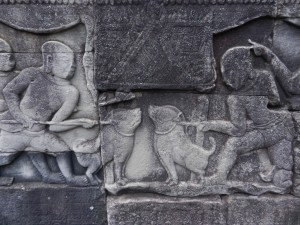
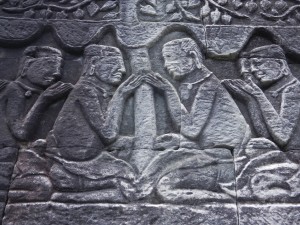
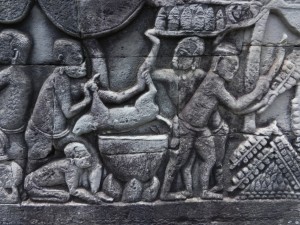
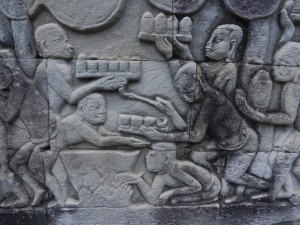
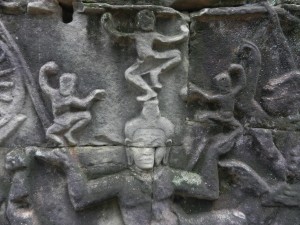
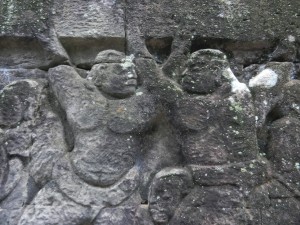
Comments on this entry are closed.